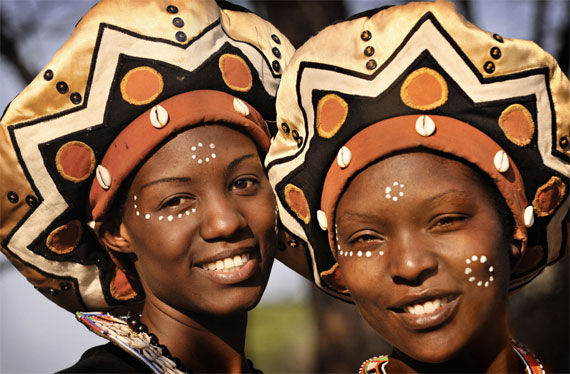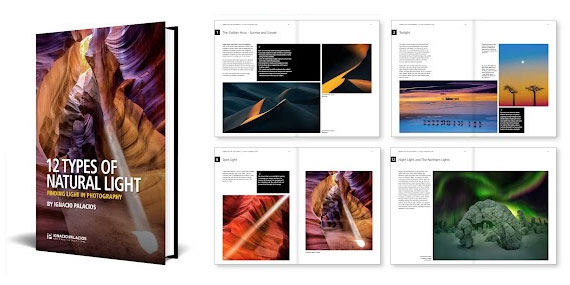Today’s article was kindly shared with us by Ignacio Palacios, author of the 12 Types of Natural Light which is designed to help photographers harness the incredible power of light.
Front light is the light that hits the front of your subject and one of the most common lighting directions in photography. It is perhaps the least dramatic form of lighting in landscape photography due to the absence of great shadows, which makes your images lack a sense of depth. However, front light often works well with portrait or black and white photography, as it lights the entire subject straight on.

Portrait photographed under front or direct light, Victoria Falls, Zambia.
It comes from behind you, therefore; the shadows fall behind the subject, leaving little contrast and dimension. Front light becomes more interesting when it comes in low, one to two hours after sunrise and one to two hours before sunset. Otherwise it is unforgiving in many ways, intense and direct.
With front light, you won’t have the complication of shadows and contrast; your subject will be evenly illuminated and you lose much of the physical depth, with objects appearing smoother. By concealing shadows, this light quality helps to conceal imperfections and it is often used in portrait photography. The only issue with shooting with this light present is to keep your shadow from the subject, as when the sun is rising or setting behind you, your shadow will be in front of you and overlapping with the foreground of your shot.
Front light can be awesome for saturating colour and is a great light for capturing rainbows or capturing shadows cast by an object directly behind the camera in order to create foreground interest, but if it is too intense, it can wipe out texture and have a washed-out dull look. Front light works best when the sun is not very high in the sky and still reflects beautiful warmth, as seen in the shot above, photographed in Zambia.
For Further Training:
Creating magnificent images requires the photographer to have full control over the tools at their disposal and understanding how light works is one of the most important elements to have in your creative arsenal. Grasping how light works is complex as it bounces off some subjects, passes through others, creates large or small shadows, influences colour and has a dramatic effect on your final image.
Understanding how to harness this incredible power of light requires you to understand the concepts of position, strength and colour and our success as photographers depend on our ability to predict and choose the best light or learn to work with what we have on offer.
This is a fantastic book for photographers of all skill levels. The book is full of beautiful images along with lots of helpful tips and techniques.
Found here: The 12 Types of Natural Light Guide
- - - - - - - - - - - - - - - - - - - - - - - - - - - - - - - - - - - - - - - - - - - - - - - - - - - - - - - - - - - - - - - - - - - - - - - - - -
Did you appreciate this newsletter? Please help us keep it going by Joining Our Patreon Supporters
What are your thoughts on this article? Join the discussion on our Facebook Page
PictureCorrect subscribers can also learn more today with our #1 bestseller: The Photography Tutorial eBook
- - - - - - - - - - - - - - - - - - - - - - - - - - - - - - - - - - - - - - - - - - - - - - - - - - - - - - - - - - - - - - - - - - - - - - - - - -
The post Front or Direct Natural Light for Photography appeared first on PictureCorrect.
from PictureCorrect https://ift.tt/FCKQo1i
via IFTTT







0 kommenttia:
Lähetä kommentti